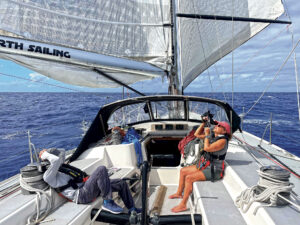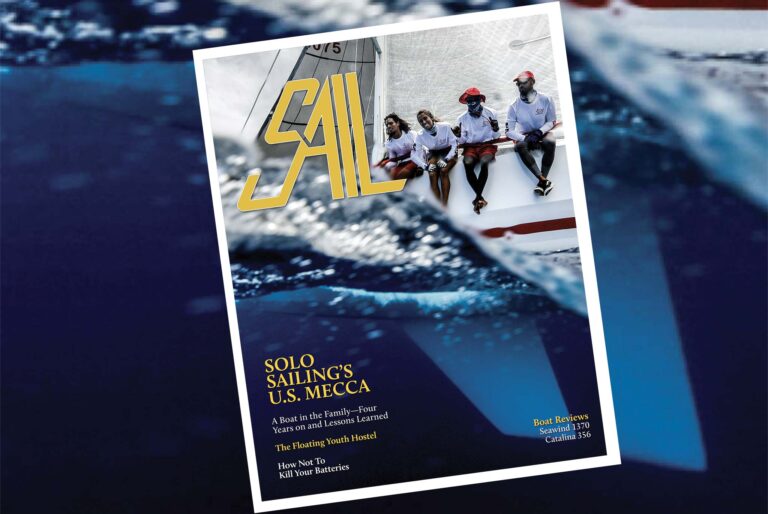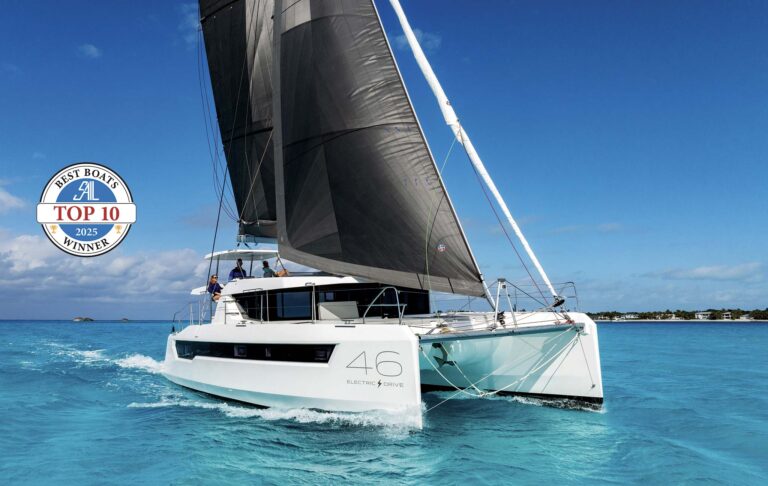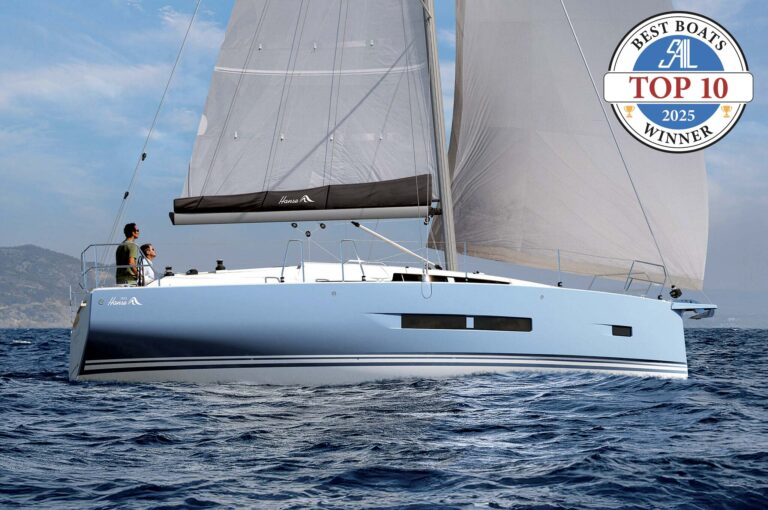
I well remember the first time I ever saw a flying sailboat. I was on Narragansett Bay several years ago, test-sailing one of those old-fashioned boats—the ones with hulls that float in the water 100 percent of the time—when we spotted a foiling Moth speeding out of Newport like the proverbial bat out of hell. We were suitably impressed. Then one of our company who was more familiar with this phenomenon said with a smirk on his face, “Watch what happens next.”
Sure enough, the Moth raced into the lee of a much larger sailboat and fell into the water again with an abrupt, inglorious splash.
Flying sailboats have come a long way since then. We are now well into a third America’s Cup cycle featuring boats capable of hydrofoiling with hulls clear of the water nearly all the time. Boats this fast, sailing several times the windspeed, never sail downwind, and the crew never need worry about sail changes. Instead, it’s all about flight control, as a boat that touches water is bound to be a loser.
Foiling boats meanwhile are on their way to taking over other important events, like the Mini-Transat and Vendée Globe, and there are more and more foiling boats being marketed to the masses. The F101 foiling trimaran, for example, recently a winner of a SAIL Best Boats award, is touted as a user-friendly flying boat that can ease rank beginners into the joys of sailing without touching water.
Another Best Boats winner, the Eagle Class 53, a super-high-tech daysailer and weekender, also sports foils.
It now seems clear the foiling phenomenon will mark out a major divide in the sport of sailing. Historically, racing technology has often helped transform the way cruisers sail their boats. Construction materials and techniques, sailing hardware, cordage and sails—all these things have been greatly refined and improved across the sport due to innovations originally pioneered on racing boats. But like canting keels before them, except to an even greater degree, hydrofoils are much too fiddly and too technical (and too expensive!) to be useful to cruisers. More tellingly, there will also likely be large numbers of racers who never embrace this technology, for exactly the same reasons.
Ultimately, I think foils will segregate not only the sorts of boats we sail, but also the ranks of sailors themselves. I used to believe that racing’s bid to attract new talent by emphasizing speed and excitement was doomed to fail, because that which makes sailing inherently attractive to people, be they racers or cruisers, is much more elemental. Now, though, I think foiling will change that. It isn’t hard to imagine a generation of racing sailors who come to the sport through foiling exactly because it is so fast and exciting, and who will have zero interest in sailing through the water rather than over it. Likewise, there obviously will also be a large number of sailors—myself included, very probably—who never to learn to fly a boat.
Traditionalists may bemoan this apparent bifurcation of our sport. Lord knows they love to complain about this sort of thing. “It’s not really sailing!” they cry. But it most certainly is. If anything, fully-foiling boats are the purest expression of the concept of sailing, which is precisely why I personally find them fascinating. A sailboat, in the end, is simply a machine that deploys foils in both the water and the air in order to achieve momentum. And a boat that can do this with its hull out of the water, flying much faster than the wind, is obviously sailing as efficiently as possible.
It is best to remember this isn’t the first time the ranks of sailors have seemingly been sundered in this way. Kiteboarders, windsurfers and iceboaters have all, in turn, carved out their own unique cults within our religion. And they, just like the grumpy traditionalists and avant-garde foilers, are all reveling in the same process: they are utilizing the wind as a motive force. What they are doing, ultimately, is not dividing the sport; they are only making it larger.
March 2020









